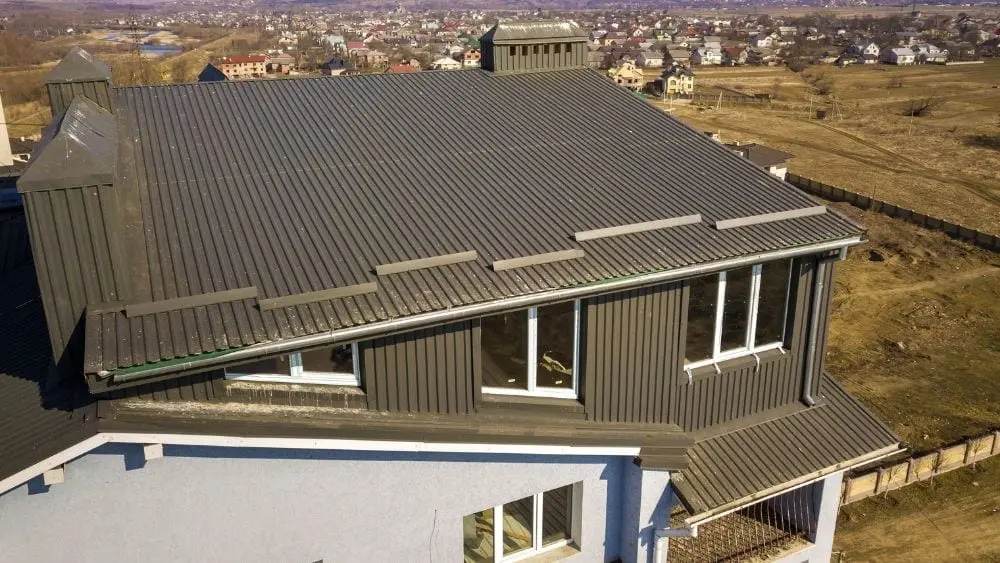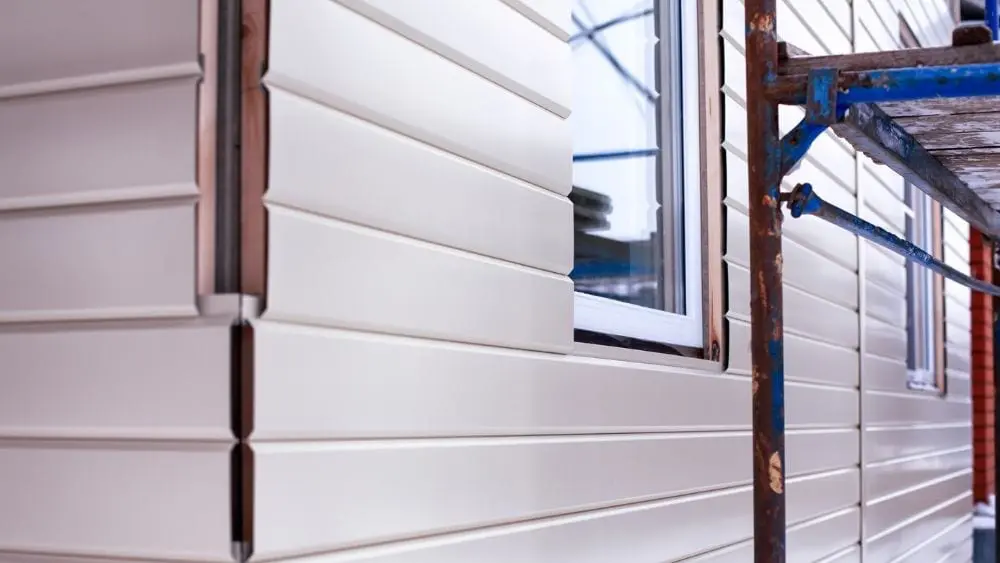One of the many important decisions new homeowners will need to make is what kind of material you want for your home’s exterior. This article will discuss metal siding and help you decide if this material is right for your home.
Metal Materials and Design

When it comes to metal siding, you have a few choices for materials. The most popular metal siding materials are steel, aluminum, copper, and zinc. Each material can be customized to fit different design styles. Some of the more popular design types are corrugated panels, standing seams, and horizontal planks. Each design has its own aesthetic perks; corrugated panels are appealing to many since their wavy designs help conceal imperfections, and standing seam uses a raised seam to connect the panels. There are a wide variety of sub-styles for these designs, such as traditional wavy corrugated panels or crimped panels. Thus, homeowners can choose whatever shape and placement (horizontal, vertical, diagonal, or a combination) that best suits their taste.
As far as colors go, homeowners don’t have to stick with traditional shades of grey or white. Several manufacturers help you elevate your curb appeal by offering bright, lively shades of reds, blues, and even greens! Additionally, these colorful metal panels can be customized to resemble other siding materials, such as stucco or wood.
With such diversity in designs and colors, there isn’t one particular home style that’s best suited for metal siding. No matter your home design, metal siding can add an intriguing tone to your home. Consider a sleek modern home with different color metal panels that paint a kaleidoscope, or a ranch style home with corrugated panels to give the typical brick sides more dynamic energy. The sky is the limit with this versatile material.
What are the Pros and Cons of Metal Siding?

Differences exist between these materials, especially regarding cost, but they all share similar advantageous traits. The primary appeal of metal siding is its strength and durability. Metal siding can last the entire lifetime of a house; steel and aluminum have a life span of at last 75 years, and copper and zinc siding may last well over 100 years. These materials can stand the test of time and weather alike; even pounding storms and high winds are no match for metal. Another plus is that metal siding tends to keep its shape, so you don’t have to worry about cracking and corrosion. Other materials, such as wood, attract insects like termites, but pests have little interest in metal siding. Finally, metal materials are all recyclable, so they’re an environmentally friendly choice for your home.
Like all materials, metal siding is not without its downsides. If you choose too thin of a metal gauge, you run the risk of the material denting, which can be difficult to remove. Homeowners who choose metal materials will also tend to have higher upfront costs, both regarding the materials themselves and the installation. While metal siding is durable, if there ever is a need to replace your siding, you may pay higher prices for repairs. Many homeowners find the price to be worth the longevity of the materials, but those with a tighter budget may want a less expensive option.
How Much Does Metal Siding Cost?

As noted, metal siding is not the cheapest material on the market. Not all metal siding is priced equally, so be sure to research each material before you make your decision. Steel and aluminum have the lowest average installation cost, tending to range anywhere from $4 to $8 per square foot. Zinc is more expensive and can range from $15 to $25 per square foot. Copper comes in at the highest price, ranging from $20 to $35 per square foot. As with all materials, costs will vary based on the material design, thickness, and your location, but these prices can be used as a general guideline.
Maintenance and Climate

One of the perks of metal siding is that once installed, it requires little to no maintenance. As mentioned, metal siding does not bend nor attract pests the way other materials do, so there’s no need to constantly check the integrity of the structure. Metal also does not absorb the sun’s heat or retain moisture, making it fairly uninhabitable for mold to grow. If you want to spend less time worrying about your house’s siding, metal may be the way to go.
Another bonus is energy efficiency. Due to its reflective abilities, metal siding diverts the sun’s rays from your house, which keeps the inside temperature stable. Likewise, during winter, the cold wind will not penetrate your house, keeping the warm air trapped inside. Whether sunshine or snowstorm, you won’t have to worry about your energy bills racking up as you struggle to maintain a comfortable temperature.
Those who live in cold climates may opt for metal siding due to its non-porous and durable nature; metal, like steel, can withstand the physical stress of freeze/thaw cycles without warping or sagging. Those in warmer climates can also benefit from metal siding, since these materials are not prone to mold or overheating, as can be the case in warm weather.

Sarah graduated from Trinity University in 2012 with a degree in International Relations and Political Science. She writes blogs on new homes, decor, communities, and more for NewHomeSource. When she’s not writing, you can find her spending time with her three cats.
 Wood Siding: Your Guide to the Different Types & Styles
Wood Siding: Your Guide to the Different Types & Styles